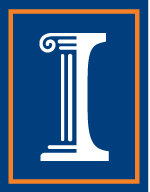Overview:
Calculating the effects associated with the propagation of statistically stationary optical fields is often a cumbersome task either analytically or computationally. For statistically stationary fields, it is the second order correlation function of the field (the mutual coherence function for time-domain fields, the cross-spectral density for the frequency-domain fields) that is propagated. The correlation functions of an optical field are of higher dimensionality than the fields themselves by a factor of approximately two (a single spectral component of a field in three spatial dimensions has a six-dimensional cross-spectral density, etc.).
One technique for decreasing the computational complexity of propagating stationary fields is through the use of a coherent mode decomposition (CMD). A CMD of a cross-spectral density (CSD) is one in which the 2N-dimensional CSD is written as the weighted sum of the outer product of N-dimensional functions, i.e.
The modes of the field, &psin, can each be propagated individually, and their associated weights, &lambdan, are indicative of the relative contribution each mode has to the total field. By choosing only the modes with weights over a certain threshold, the number of modes that need to be propagated turns the problem of calculating a 2N-dimensional integral into calculating a finite number of N-dimensional integrals.
We have developed the analytic framework
for extending the CMD technique to fields that obey an eikonal relation,
i.e. fields that are geometrical [1, 2]. For both scalar and
electromagnetic
fields, a method for propagating CSDs, and thus spectral information about the field, within the geometrical limit is given. These results are then extended to the time-averaged intensity measurements one might make with broadband light.
We have also been interested in methods to
speed up the calculation of the CMD before propagation. A digital
representation of the CSD is amenable to a number of modal decompositions.
The LDL decomposition has been found to be less numerically-intensive than
the standard eigenvalue decomposition technique often used in calculating
the coherent modes and associated weights [3].
Collaborators:
This work has been done in
collaboration with Prof. John C. Schotland of University of Pennsylvania and Prof. Emil Wolf of the University of Rochester. We are also expanding on some of these problems with Dr. Adam Zysk and Prof. Mark Anastasio as the Illinois Institute of Technology.
References:
-
Eikonal method for calculation of coherence functions
A.M. Zysk, J.C. Schotland, and P.S. Carney,
Physical Review Letters,
Vol. 95,
043904
(2005)
PDF
-
Geometrical limits of stochastic electromagnetic fields
R.W. Schoonover, A.M. Zysk, P.S. Carney, J.C. Schotland, and E. Wolf
Physical Review A,
Vol. 77,
043831
(2008)
PDF
-
Computationally efficient methods for calculating coherent-mode representations
B.J. Davis and R.W. Schoonover
Optics Letters,
Vol. 34,
pp. 923-925
(2009)
PDF
|





